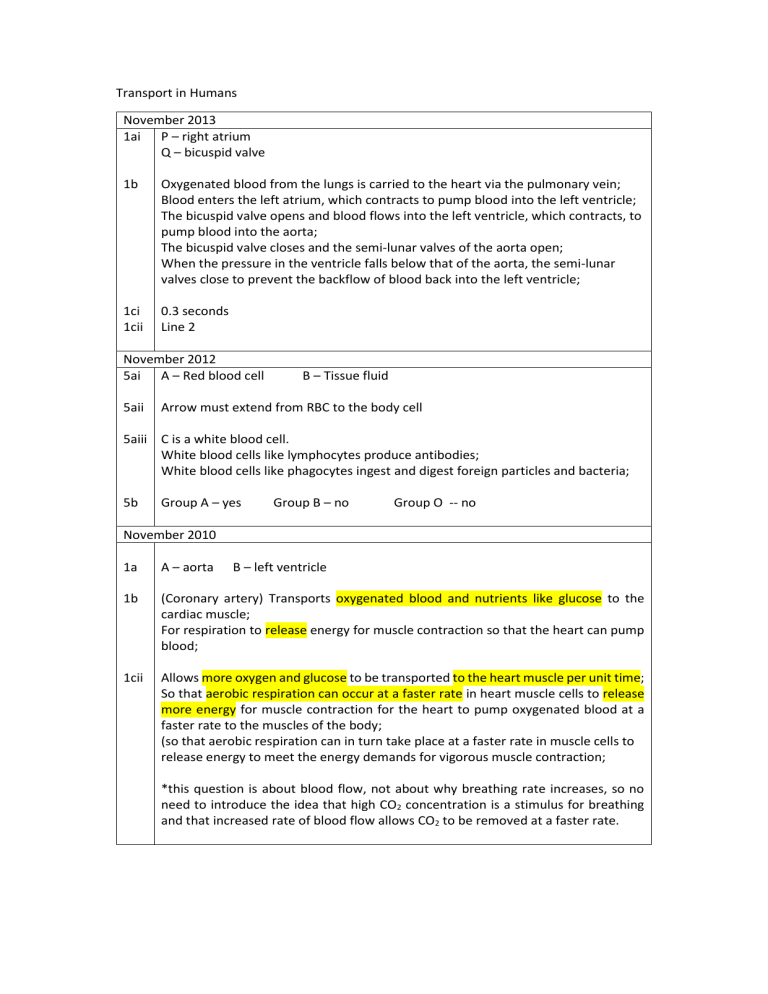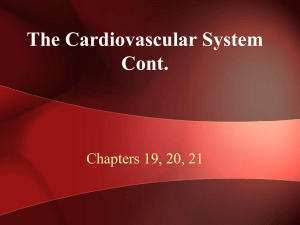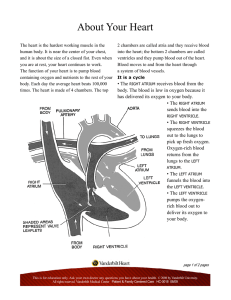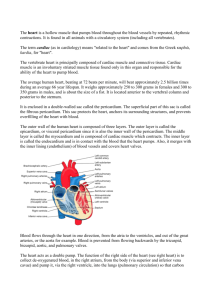Transport in Humans TYS
advertisement

Transport in Humans November 2013 1ai P – right atrium Q – bicuspid valve 1b Oxygenated blood from the lungs is carried to the heart via the pulmonary vein; Blood enters the left atrium, which contracts to pump blood into the left ventricle; The bicuspid valve opens and blood flows into the left ventricle, which contracts, to pump blood into the aorta; The bicuspid valve closes and the semi-lunar valves of the aorta open; When the pressure in the ventricle falls below that of the aorta, the semi-lunar valves close to prevent the backflow of blood back into the left ventricle; 1ci 1cii 0.3 seconds Line 2 November 2012 5ai A – Red blood cell 5aii B – Tissue fluid Arrow must extend from RBC to the body cell 5aiii C is a white blood cell. White blood cells like lymphocytes produce antibodies; White blood cells like phagocytes ingest and digest foreign particles and bacteria; 5b Group A – yes Group B – no Group O -- no November 2010 1a A – aorta B – left ventricle 1b (Coronary artery) Transports oxygenated blood and nutrients like glucose to the cardiac muscle; For respiration to release energy for muscle contraction so that the heart can pump blood; 1cii Allows more oxygen and glucose to be transported to the heart muscle per unit time; So that aerobic respiration can occur at a faster rate in heart muscle cells to release more energy for muscle contraction for the heart to pump oxygenated blood at a faster rate to the muscles of the body; (so that aerobic respiration can in turn take place at a faster rate in muscle cells to release energy to meet the energy demands for vigorous muscle contraction; *this question is about blood flow, not about why breathing rate increases, so no need to introduce the idea that high CO2 concentration is a stimulus for breathing and that increased rate of blood flow allows CO2 to be removed at a faster rate.





